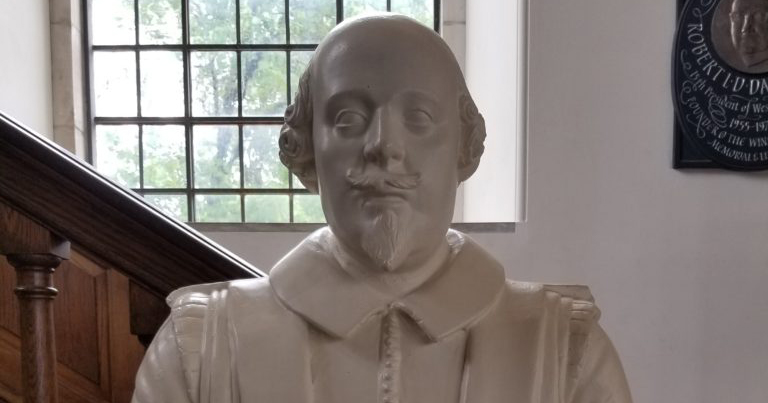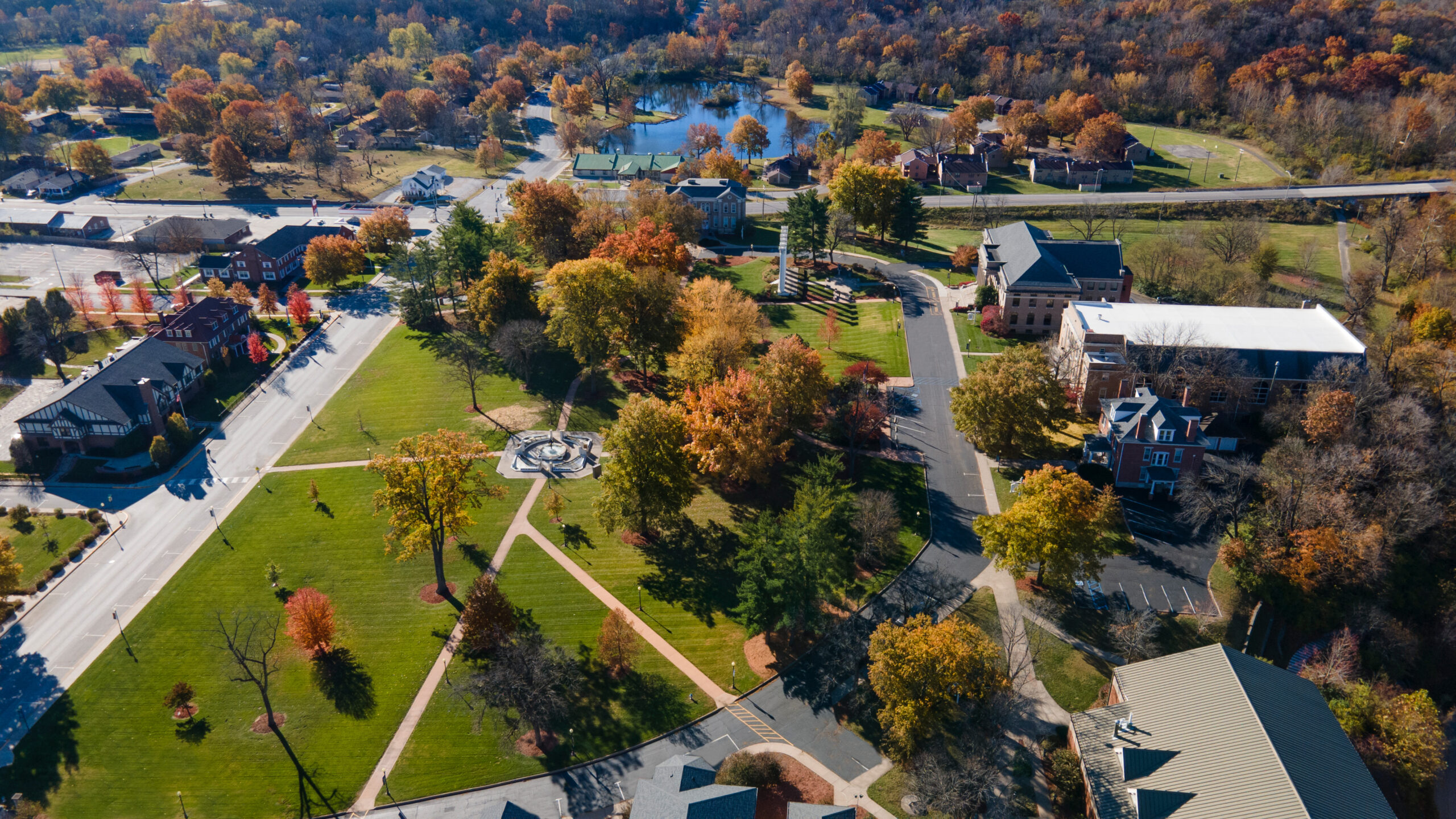Visitors of the magnificently restored Christopher Wren church on Westminster’s campus, the Church of St. Mary the Virgin, Aldermanbury, are greeted at the back of the sanctuary by a huge bust of the Stratford-on-Avon bard himself, William Shakespeare.
As a result, one of the first questions the thousands of visitors ask every year is, Why the greatest writer of all times is exhibited in the Church?
To find the answer, one must go back to the time of John Heminges (1556-1630) and Henry Condell (?-1627).
Both shared the birthplace of Shakespeare, Stratford-on-Avon, and both were members of Shakespeare’s theatre company, the King’s Men.
In addition, both men lived on the west side of Aldermanbury parish just south of the Aldermanbury Church.
A grocer by trade, Heminges was so enamored with the theatre that he basically turned his business over to his wife so he could devote time to the stage. While he performed many roles, his principal interest was management of the theatre on the business side.
In 1599, Heminges joined Shakespeare and others in becoming a shareholder in the Globe Theatre, and he later on assumed the role of its principal manager until it burned in 1613.
Obviously, Heminges and Condell were close friends of Shakespeare, because they were two of the three people mentioned in Shakespeare’s will. Each of them was bequeathed 26 shillings and eightpence to purchase mourning rings.
Later, in 1623, seven years after Shakespeare’s passing, Heminges and Condell were co-editors of the First Folio of Shakespeare’s plays.
However, the most important relationship to the Westminster story is the two men’s involvement with the neighboring St. Mary, Aldermanbury Church. Both Heminges and Condell were active in the church and were elected churchwardens and then trustees.
During this time, for 15 years, William Shakespeare lived with a wigmaker named Christopher Mountjoy whose shop was a block from the Aldermanbury parish and only several blocks from the homes of Heminges and Condell.
 Because of Shakespeare’s close proximity to the homes of his two friends and St. Mary, Aldermanbury Church itself, historians have speculated that Shakespeare must have worshiped there. While no record of his name appears in church records and his attendance would have been infrequent at best, many researchers believe he might have attended services with his friends Heminges and Condell, who were extremely active in the church, or must have at least attended the christenings of their children or the parish feasts.
Because of Shakespeare’s close proximity to the homes of his two friends and St. Mary, Aldermanbury Church itself, historians have speculated that Shakespeare must have worshiped there. While no record of his name appears in church records and his attendance would have been infrequent at best, many researchers believe he might have attended services with his friends Heminges and Condell, who were extremely active in the church, or must have at least attended the christenings of their children or the parish feasts.
Shakespeare would have had many opportunities to attend christenings since Heminges had 13 children Condell had nine, and since a popular dining spot for the three friends was the nearby Axe Inn, the chances are Shakespeare at one time or another entered the church.
As a result of all these historical close connections, a bust of Shakespeare was placed in the sanctuary of the restored church on Westminster’s campus.
John Heminges and Henry Condell were both buried at St. Mary, Aldermanbury and today a memorial to them is found in the former St. Mary, Aldermanbury churchyard on Love Lane in London. The memorial is made from pink granite with a bust of Shakespeare on top. It and was built in 1896 to stand in Aldermanbury Park. 
This is the editorial account for Westminster College news team. Please feel free to get in touch if you have any questions or comments.







You must be logged in to post a comment.